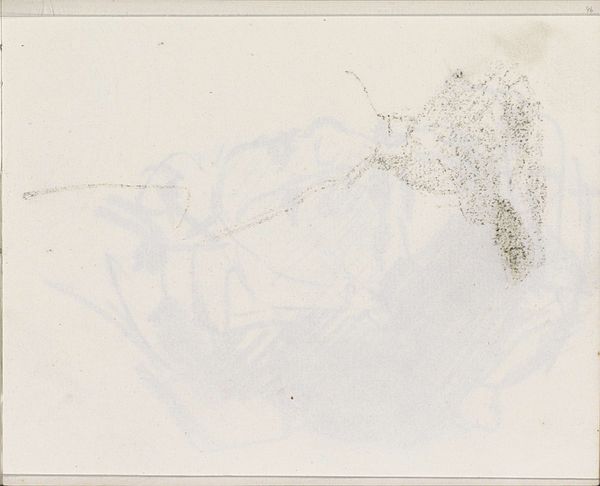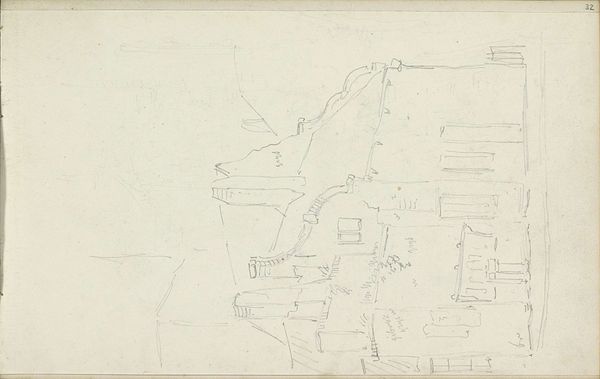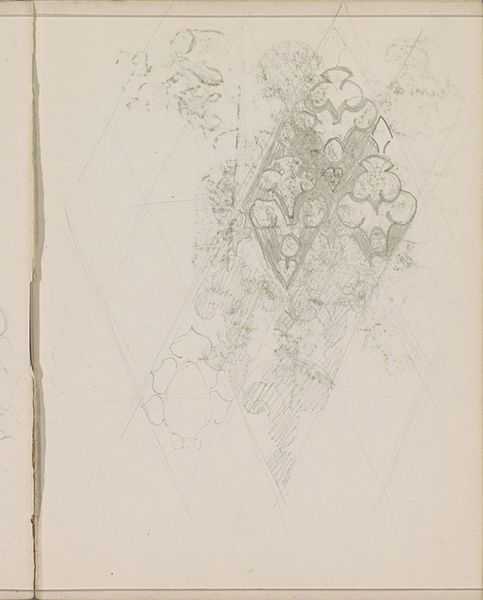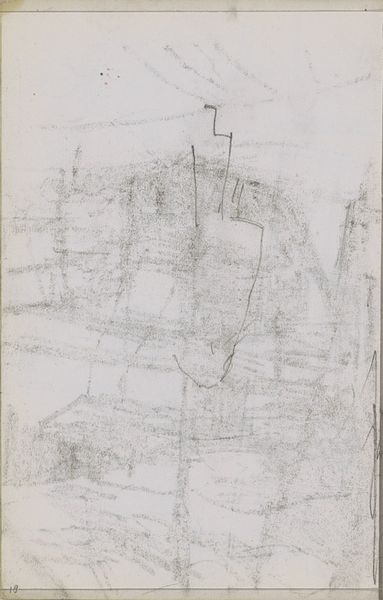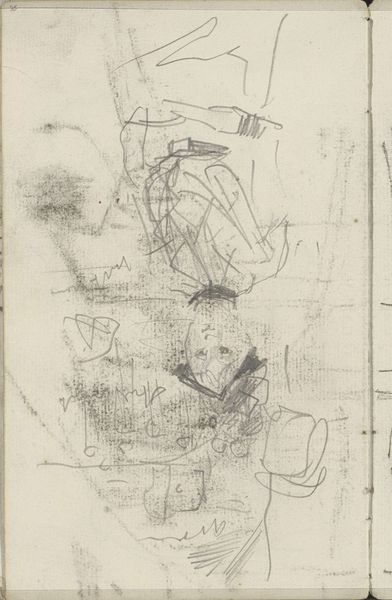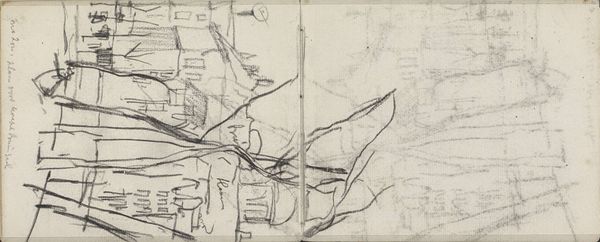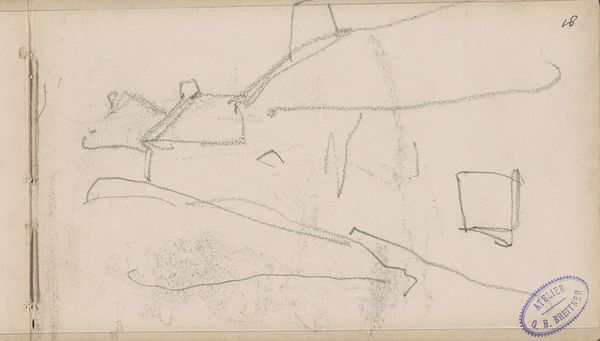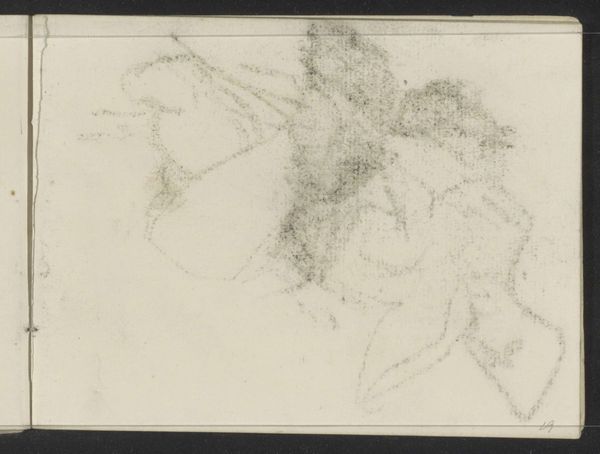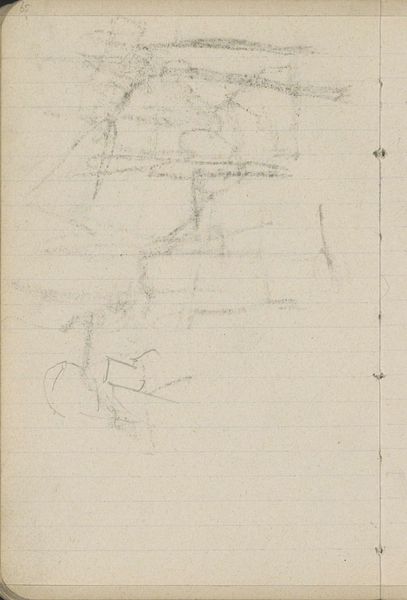
drawing, pencil, graphite
#
drawing
#
amateur sketch
#
light pencil work
#
pencil sketch
#
incomplete sketchy
#
form
#
personal sketchbook
#
detailed observational sketch
#
pen-ink sketch
#
pencil
#
rough sketch
#
abstraction
#
line
#
graphite
#
sketchbook drawing
#
initial sketch
Copyright: Rijks Museum: Open Domain
Curator: Immediately, I'm struck by its ephemeral quality. The faintness of the graphite gives it a sense of something fleeting, like a half-remembered dream. Editor: We’re looking at "Figuurstudie," or "Figure Study," attributed to Jozef Israëls and dated from 1834 to 1911. It's currently held at the Rijksmuseum and executed using graphite and pencil. Curator: The quick, light pencil work gives it the air of a personal sketchbook. One senses Israëls working out the initial forms and composition, perhaps before committing to a more labored piece. You can almost feel the artist’s hand moving across the paper. Editor: Absolutely, it shows the raw process. What’s fascinating to me is how this sketch can reflect Israëls' larger artistic project within its historical setting. Sketches such as this, were not just studies but vital tools that were shared among workshops and were subject to market value that provided valuable insights into the socio-economic practices of artistic production at the time. Curator: I can see how this relates. Focusing purely on the lines, notice how he suggests depth and volume with minimal strokes. There’s a real economy of means at play here. It is more about feeling than accurate depiction, isn’t it? Editor: Precisely. In doing so, Israëls elevates the sketch from a mere preparatory stage to an independent, thoughtful piece. The availability of such sketches challenges established value judgments on what we regard as traditionally completed 'art' . Curator: Indeed. There is no real attempt to arrive at complete representation here; it stays open, fluid. Editor: Considering the artist's production of 'complete' artworks, and studying a simple study such as this in light of production means can provide an additional framework with which we can look at the work. Curator: It provides a vital component in viewing all works in art history: The process of production. Thank you for shedding additional light on that! Editor: My pleasure, looking at those artistic 'scars' as clues can certainly be very helpful in looking at other more renowned art in history.
Comments
No comments
Be the first to comment and join the conversation on the ultimate creative platform.

